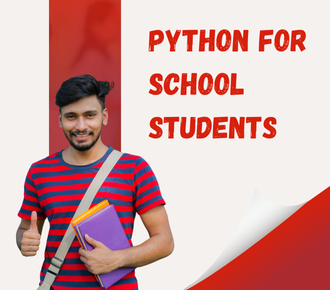- 9:30am - 6:30pm, Mon - Sun
- +91 7836034313
- R2-149 first floor M3M Cosmopolitan, sector 66 Gurugram 122102

In today’s digital-first world, coding for kids Python has become one of the most important skills for school students. Python is simple, powerful, and widely used in real-world applications such as Artificial Intelligence, Web Development, and Data Science. For students, it is the perfect entry point to understand programming and develop problem-solving skills.
This blog will serve as a complete preparation guide for school students learning Python. We will cover:
Chapter-priority roadmap for learning Python
Actionable coding python tips
Essential coding python notes
Complete coding python syllabus
Sample questions and PYQs
Common mistakes-to-avoid
A free downloadable checklist
We will also provide direct links for students and parents looking for expert help:
Hire a Python Home Tutor in Gurugram
Python is considered the best first programming language for children because:
Simple syntax (easy to understand like English)
Powerful applications (AI, games, websites, data science)
Strong foundation (helps in future coding exams and projects)
Beginner-friendly (quick results with less coding)
Learning Python improves logical thinking, problem-solving ability, and creativity in students.
Here’s a structured coding python syllabus for beginners:
Introduction to Python
Installation and setup
Writing your first program
Input and Output
Python Basics
Variables and data types
Operators and expressions
Control Structures
If-else conditions
Loops (for, while)
Functions
Defining and calling functions
Parameters and return values
Data Structures
Lists, tuples, sets, and dictionaries
Strings
String operations and formatting
File Handling
Reading and writing files
Object-Oriented Programming (OOP)
Classes and objects
Inheritance and polymorphism
Modules and Libraries
Using built-in modules (math, random)
Introduction to external libraries
Projects for Students
Calculator
Quiz game
Simple chatbot
For school students, learning should be gradual. Here’s a recommended order:
High Priority: Basics (Variables, Operators, If-Else, Loops)
Medium Priority: Functions, Data Structures, Strings
Low Priority: File Handling, OOP, Libraries (but useful for projects)
By following this chapter-priority roadmap, students will learn step by step without getting overwhelmed.
Some schools and Olympiads already include Python. Here are sample PYQs for practice:
Q1. Write a Python program to print all even numbers between 1 and 100.
Tests loop concepts.
Q2. Define a function that takes a number and returns its factorial.
Tests recursion and functions.
Q3. Write a program to count vowels in a given string.
Tests string manipulation.
Q4. Store marks of 5 students in a list and print the highest score.
Tests lists and basic logic.
Q5. Create a simple calculator program using functions.
Tests functions, operators, and input-output.
Practicing such problems will help students strengthen their coding base.
Skipping basics
Students often rush to advanced projects without mastering basics.
Not practicing enough
Reading notes without coding practice reduces retention.
Ignoring indentation
Python is indentation-sensitive, so code structure matters.
Overusing copy-paste
Writing code yourself improves logic and problem-solving.
Not debugging
Debugging is a key skill; students must learn from errors.
Start small: Begin with printing messages, simple loops, and conditions.
Daily coding practice: Write at least one small program daily.
Build mini-projects: Create simple calculators, guessing games, and chatbots.
Work on notes: Keep personal coding python notes for future revision.
Take guidance: Join classes with expert mentors via Tutors.
Learn input-output, loops, conditions.
Solve at least 10 practice problems.
Write programs using lists, tuples, and dictionaries.
Work on 1–2 mini projects.
Learn classes and objects.
Create final project like a calculator, quiz, or chatbot.
Revise all topics with PYQs.
Our Coding for Kids Python Checklist includes:
Complete coding python syllabus
Chapter-priority study plan
Daily practice tracker
Mistakes-to-avoid list
Mini project ideas
👉 Download Free Checklist Here
Self-learning is good, but expert guidance helps students progress faster. Tutors provide:
Curated coding python notes
Doubt-solving support
Step-by-step assignments
Motivation and regular feedback
Explore:
Learning coding for kids Python opens doors to logical thinking, creativity, and real-world problem-solving. With the right syllabus roadmap, coding python notes, actionable tips, PYQs, and expert guidance, students can become confident coders.
Start small, stay consistent, avoid mistakes, and practice daily. Use our free downloadable checklist to track progress and keep learning fun.
With the right guidance, today’s school students can become tomorrow’s tech innovators.








